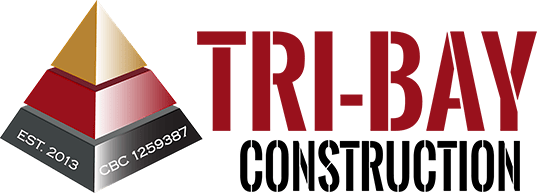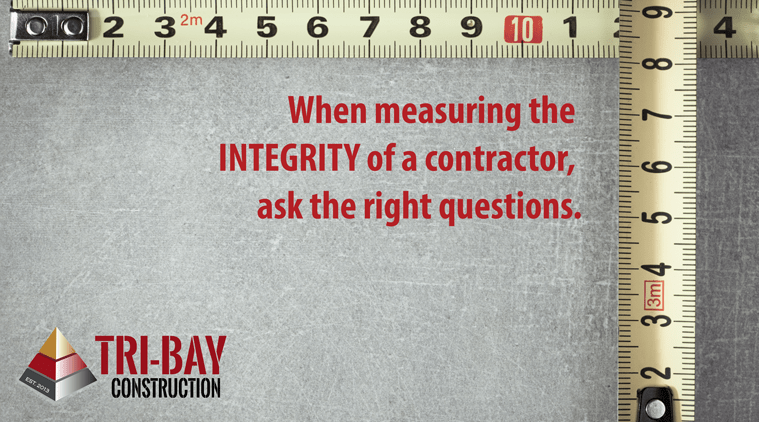Previously we have discussed Integrity and Trust and the importance of these principles in relation to a construction project during these challenging times. Today we will link “collaboration” to trust and integrity.
As with many words, there are many definitions and understandings of the word “collaborate.” To many, it simply means “working together.” To others, it might include “working together toward a common goal.” That sounds like “teamwork.”
At Tri-Bay, we take that a step further. We believe there is a distinct difference between “teamwork” and “collaboration,” which, we believe, is often used interchangeably. Teamwork can be seen as combining the individual efforts of all the team members to achieve the desired goal. In contrast, we see “collaboration” as all team members working together to collectively complete a project or achieve a goal.
What does it take to work collectively? We should first identify some of the skills required for collaboration.
One must also respect the diversity of skills on the team. Everyone is invited to the team for a specific skill and the expertise required to complete the project. There is no one member of the team more important than another. Every team member needs something from other team members. This is especially true in construction and quite often not practiced. For example, if you have a civil engineer for the site development design but do not have an Architect for the building, you will likely have a parking lot without a building.
If you have an Architect but no structural engineer, you may have a structure that will crumble in the first strong wind if you build it without proper structural design. These are extreme examples.
The smaller details are what usually cost money to repair if only revealed while the work is in progress. A few minutes of discussion between members of the design team eliminates most of these costs in the long run.
Another trait that is not so common these days is taking responsibility for mistakes. A mistake is just a sign that there is a better way to do something or a better location for something. If we collaborate in the design process, we will find these things as they happen instead of combining individual members’ efforts and finding them much later, or not at all. It is then far too late to correct the error without an additional cost.
To follow are examples of what should have been collaborative “teamwork” but was actually individuals combining their information.
We believe the same is true in the construction phase. When a subcontractor treats himself as an island, or worse, when a Project Manager or Field Superintendent allows subcontractors to treat themselves as islands, the results are often expensive and time-consuming. Weekly progress meetings on the site with ALL the subcontractors currently working on the project.
This includes other team members who will be on the project in the following weeks, keeping them in the loop. When the whole understands the needs and the integration of the individual parts, the result is an efficient, well-organized, less costly, and quality project that owners desire. From designers to subcontractors, the entire team is satisfied with their work and proud to sign their names on the project.
Many in the construction industry are still involved in public and private Design-Bid-Build projects where the low bidder is the winner. These projects have no collaboration between designers and contractors and often no collaboration between owners and designers. Our experience has continued to show, especially in these highly competitive times of labor shortages, that owners do not get the best value for their money in that scenario.
The low bid cost comes with frustration, delays, unreliability, mistrust, conflicts, and stress. When this happens, it results in change orders that drive the project’s cost to a level that is higher than the highest bidder on the project. We do not see any winners in this scenario. Building a collaborative team that can travel with you through the entire process is the way to eliminate the previously mentioned outcomes.
There seems to be a problem in our industry that has never been entirely solved. A gap often exists between the financiers, government jurisdictions, real estate brokers, and General Contractors. The lenders want detailed values before they approve a loan for a project; owners need to know they can borrow enough money required for their project but cannot provide the detail the lenders want. The Owners seek out a contractor and give them the size of a building and nothing else and want to know how much it costs.
To build a conceptual estimate from scratch and no details require hours of research and work. Real estate brokers want to hear square foot costs and also, most times, have no details. The problem is that every construction project is unique, some more than others. Each one requires both common components and unique components. Until there is a design or a road map, those costs are general, at best. It is easy to throw a square foot cost on a project with no detail. Its accuracy is the question. How far off is that square foot cost.





